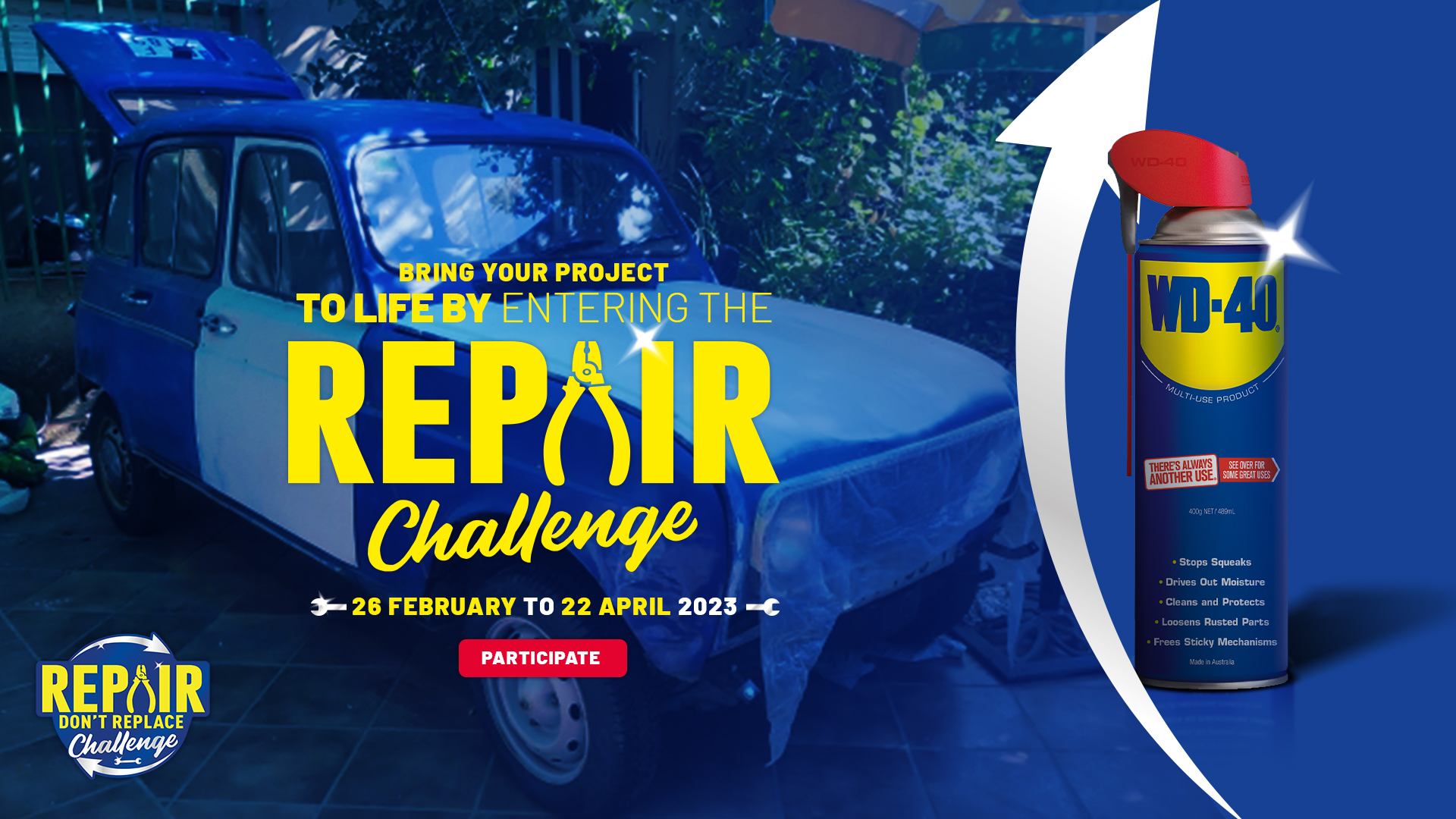Brilliant brand activation: WD-40 Repair Challenge
Brands spend billions of pounds a year on price promotion. This activity temporarily builds short term sales. However, it has limited long term effects, according to research by Prof Byron Sharp (1). It also does nothing to build brand equity and if anything erodes it. This is why we encourage teams to go beyond brand promotion to ‘brand activation’: creating distinctive, brand-led campaigns that boost sales AND brand equity. A brilliant brand activation example is the WD-40 brand’s Repair Challenge.
The campaign encourages people to repair, restore, and renovate items instead of replacing them. Entrants are invited to submit photos and videos of their repair projects with a chance to win a cash prize. The campaign has grown to be a global initiative, generating a total of 400 million impressions and 3 million website visits.
Below we explore what makes Repair Challenge an effective brand activation campaign. We’ll use the Brand Activation Insight tool from the brandgym Mastering Brand Growth program, which helps you highlight a ‘sweetspot’ from three sources of insight: 1. Passion points, 2. Your brand story, 3. Link to your product category.

1. Tap into a PASSION POINT
Exploring ‘passion points’ is the first source of inspiration for a brand activation campaign. These are areas of interest to your core consumer group, such as hobbies and passtimes. For WD-40, DIY is an obvious passion point for current and potential consumers. The campaign also taps into an growing interest in repairing not replacing products as part of a more sustainable way of living. “The Repair Challenge is the perfect opportunity to inspire millions of doers, fixers and builders to use our products to extend the lifespan of their tools, worn down equipment, bicycles or just about anything else, and keep them in circulation for longer,” as the brand’s website explains (2).
The team dug deeper to find a specific angle on this passion point, which was the satisfaction that comes from sharing DIY projects and getting recognition for your accomplishments. DIY projects are not only about saving money, they’re become a form of self-expression and empowerment. By aligning the Repair Challenge with this movement, WD-40 is not just promoting a product, it’s fostering a community.
2. Bring to life your BRAND STORY
The next step is to find a link between the passion point and your brand positioning. In this way, the brand activation campaign works as one ‘chapter’ of telling your brand story. Repair Challenge has a clear and obvious link to the WD-40 brand idea which is about “getting the job done right”. The Repair Challenge dramatises the brand idea, by collecting, curating examples of people using WD-40 to get the job done right.

3. Link to your product CATEGORY
The third, final and crucial step is to ensure that the brand activation campaign has a link to your product category. This increases the chances of the campaign helping you ‘SMS’ (sell more stuff) by associating your brand with a relevant usage occasion. This seems obvious. But activation campaigns can often be ‘logo slapping’ exercises, where the link of the activity to the brand’s product is unclear.
At the core of the Repair Challenge is the seamless integration of WD-40 products. Participants use various WD-40 products to bring life back to old or broken items, showcasing the product’s utility in a practical and relatable way. This integration is not forced; it is a natural extension of the product’s use-case scenarios.
4. AMPLIFY ACROSS YOUR MIX
Amplifying your brand activation campaign across channels allows you to ‘turbo charge’ your marketing activity. This is more than just a ‘matching luggage’ approach where all marketing looks the same. Turbo marketing plans orchestrate different channels so they reinforce each other and work together. For the Repair Challenge campaign, the marketing team used a mix that included:
- Social media (Facebook, Instagram) and digital advertising: encouraging people to enter and share their projects
- In-store display to grab attention, create interest and drive more sales
- Collaboration with repair communities, such as the Repair Café in the UK

5. Create REPLICABLE brand activation properties
One big advantage of brand activation campaigns is the potential for amplification over time. Carling Black Label’s Be the Champion Coach campaign has run for 10 years, for example. This creates ‘fresh consistency’ over time to build distinctive memory structure. Rather than re-inventing the marketing plan ever year, teams can work on evolving and improving a replicable activation campaign to make it bigger and better.
A further benefit of creating a brand activation property is the potential for it to be leveraged across multiple markets. Repair Challenge is now on its third year and has grown into a truly impressive global campaign. Thirty countries participated in the latest edition of the campaign with interest growing in other markets. This expansion of a single concept across multiple markets is not just about saving money through “economies of scale”. It also creates what I call “economies of ideas”: getting one great idea into more places.
In conclusion, the WD-40 Repair Challenge is a brilliant example of brand activation. It aligns seamlessly with the DIY passion point, reinforces the brand’s core message, integrates the product in a meaningful way, taps into sustainability, and has successfully gone global.
You can explore TURBO MARKETING in depth on the short, on-demand course on our brandgym Academy platform here. The course is fully refunded if you go on to take the full brandgym Mastering Brand Growth program, where we explore a comprehensive and practical 8-step program for creating brand strategy to inspire business growth.
SOURCES
(1) How Brands Grow, by Byron Sharp
(2) Repair Challenge


